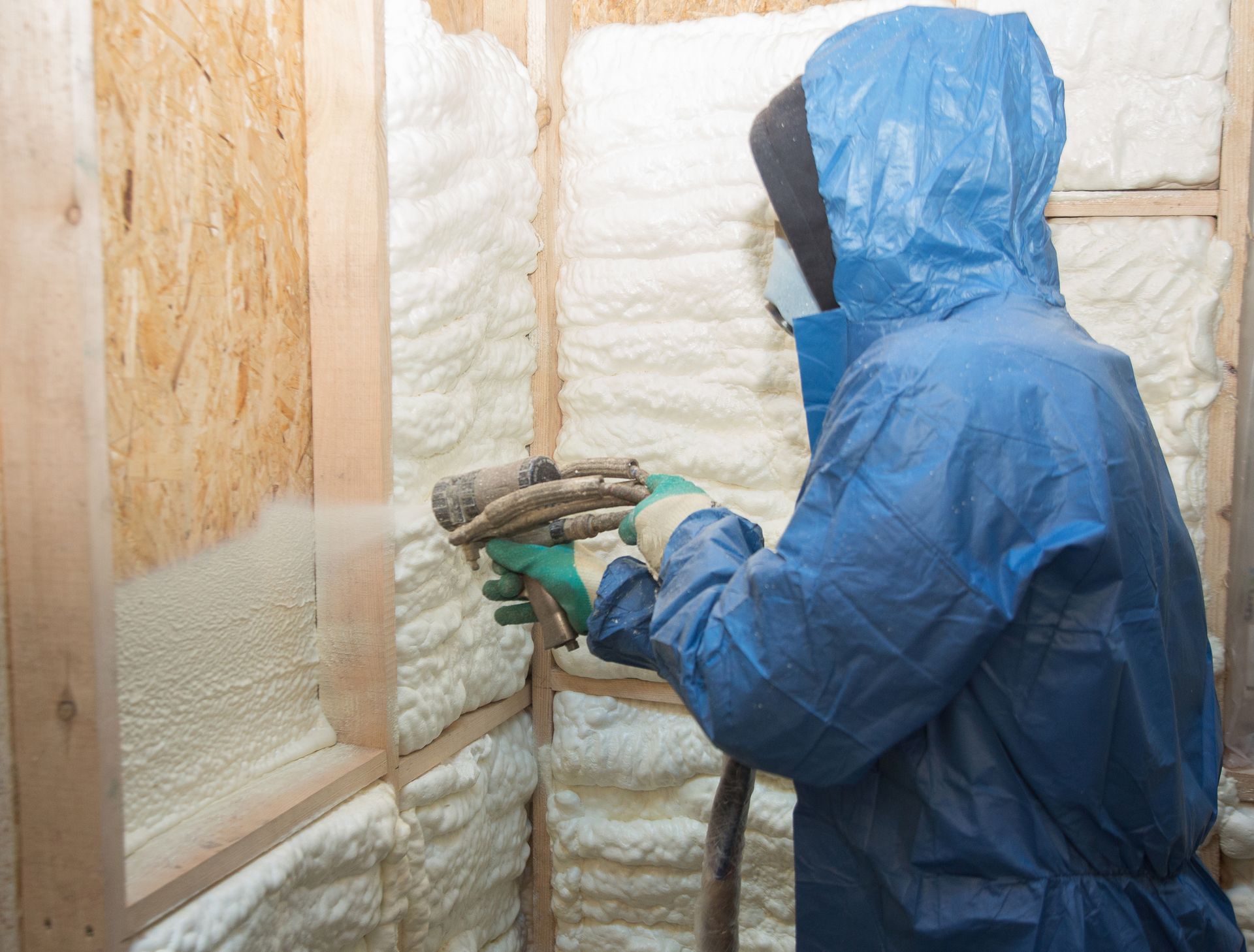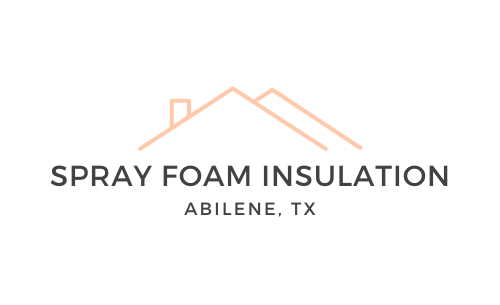Spray Foam Insulation Services
Abilene, TX
Professional Spray Foam Insulation Services

Residential Spray Foam Insulation
- In Wall Spray Foam Insulation (Closed Cavity)
- Open Cavity Spray Foam Insulation
- Attic Insulation
- Roof and Ceiling Insulation
- Window and Door Frame Insulation
- Exterior Wall Spray Foam Insulation

Commercial Spray Foam Insulation
- Open and Closed Cavity In Wall Insulation
- Roof and Ceiling Insulation
- Full Warehouse Insulation
- Pole Barn Insulation
- Any Other Commercial Buildings
What is Spray Foam Insulation?
Spray foam insulation is a highly effective method of insulating homes and buildings in Abilene, Texas. It is a type of insulation that is applied as a liquid and expands into a foam, filling gaps and creating a seamless barrier against heat transfer. This innovative insulation solution comes in two main types: open cell spray foam and closed cell spray foam. There are two main types of spray foam insulation: open cell and closed cell. Open cell spray foam is a lightweight and flexible option that is suitable for interior applications. It has a lower density and is more breathable, allowing moisture to pass through. Closed cell spray foam, on the other hand, is denser and more rigid. It provides a higher level of insulation and acts as a moisture barrier.
Open Cell vs Closed Cell Spray Foam: What Kind Do I Need?
Open Cell Spray Foam Insulation
Open cell spray foam insulation is an efficient choice for open cavities. Open cell foam is a lightweight and flexible option that is ideal for interior applications. It has a lower density and is more breathable compared to closed cell spray foam. This type of insulation is commonly used in walls, attics, and crawlspaces.
One of the key advantages of open cell spray foam insulation is its high R-value. R-value is a measure of an insulation material's resistance to heat flow, and open cell spray foam boasts an impressive R-value of around 3.5 per inch. This means that even a thin layer of open cell spray foam can provide significant thermal resistance, helping to keep indoor spaces comfortable and energy-efficient.
Open cell spray foam insulation is created by mixing chemicals that react and expand upon application. The resulting foam is composed of tiny cells that are open and interconnected. This open-cell structure allows the foam to be flexible and compressible, making it an excellent choice for insulating irregularly shaped spaces and open cavities.
When applied, open cell spray foam expands to fill every nook and cranny, creating an airtight seal. This air barrier helps to prevent drafts and limit the infiltration of outside air, which can greatly impact energy efficiency. Additionally, the open cell structure of this foam allows for moisture vapor to pass through, reducing the risk of condensation and mold growth.
Closed Cell Spray Foam Insulation
Closed cell spray foam insulation is a versatile solution for closed cavities. Closed cell foam is a denser and more rigid option. It is known for its excellent thermal resistance and ability to provide a moisture barrier. This type of insulation is commonly used in areas that require a higher level of insulation, such as basements and exterior walls.
With a higher R-value of around 6.5 per inch, closed cell spray foam insulation offers superior thermal resistance compared to open cell spray foam. This makes it an excellent choice for areas where space is limited, as a thinner layer can achieve the same level of insulation as a thicker layer of open cell foam.
The closed cell structure of this insulation is created by trapping gas within the foam cells, resulting in a rigid and dense material. This rigidity gives closed cell spray foam insulation excellent structural strength, making it suitable for applications where added support is needed.
Due to its closed cell structure, this type of insulation acts as an effective vapor barrier, preventing the passage of moisture vapor. This can be particularly beneficial in areas prone to high humidity or moisture intrusion. Additionally, the impermeable nature of closed cell spray foam helps to reduce the risk of mold growth and improve indoor air quality.
When deciding between open cell spray foam insulation and closed cell spray foam insulation, it's important to consider the specific requirements of your project. Open cell spray foam is ideal for filling open cavities and providing thermal resistance, while closed cell spray foam excels in closed cavities and offers enhanced structural support and moisture control.
Ultimately, both types of spray foam insulation offer unique benefits and can be effective solutions for improving energy efficiency and comfort in your home or building. Consulting with a professional insulation contractor can help you determine the best choice based on your specific needs, budget, and desired outcomes. But don't worry, we can help you figure this all out. Give us a call today at 325-267-6009!
Superior Performance and Efficiency For More Savings
Spray foam insulation offers several benefits, including increased energy efficiency and savings. By creating an airtight seal, it prevents air leakage and reduces heat transfer, resulting in lower heating and cooling costs. This type of insulation also helps to regulate indoor temperature, keeping homes comfortable year-round. In addition to energy savings, spray foam insulation provides other advantages. It acts as a sound barrier, reducing noise transmission from outside and between rooms. It also helps to prevent the entry of dust, pollen, and other allergens, improving indoor air quality. Another advantage of spray foam insulation is its durability. Unlike traditional insulation materials like fiberglass, spray foam does not sag or deteriorate over time. It can last for several decades, providing long-term insulation benefits.
How and Where Can Spray Foam Insulation Be Used?
Spray foam insulation is highly versatile and can be effectively used in various commercial spaces. Here are some common applications of spray foam in commercial buildings:
- Roofing: Spray foam insulation can be applied to the underside of the roof deck, creating a seamless and durable insulation layer. This helps to prevent heat transfer, reduce energy consumption, and improve the overall energy efficiency of the building. It also provides a moisture barrier, protecting the roof from leaks and water damage.
- Walls: Spray foam insulation can be applied to both interior and exterior walls of commercial buildings. It fills gaps and voids, creating an airtight seal that prevents air leakage and reduces heat transfer. This helps to maintain a comfortable indoor temperature and lower heating and cooling costs. Additionally, spray foam insulation acts as a sound barrier, reducing noise transmission between rooms or from outside sources.
- HVAC Ducts: Insulating HVAC ducts with spray foam helps to prevent energy loss and improve the efficiency of heating and cooling systems. By minimizing air leakage, spray foam insulation ensures that conditioned air reaches its intended destination without wasteful leaks. This can result in significant energy savings and improved indoor comfort.
- Flooring: Spray foam insulation can be applied beneath concrete or other types of flooring to provide thermal insulation and soundproofing. It helps to regulate the temperature of the floor, making it more comfortable to walk on. Additionally, it reduces noise transmission between floors, creating a quieter environment.
- Crawlspaces and Basements: Spray foam insulation is an excellent choice for insulating crawlspaces and basements in commercial buildings. It helps to seal off these areas from moisture and outside air, preventing mold growth, water damage, and energy loss. This can contribute to a healthier indoor environment and increased energy efficiency.
Our Insulation Process
- We perform a thorough evaluation of the residential or commercial space to determine whether it is best to use open-cell or closed-cell spray foam. We also identify and take into account recessed lights, electrical installations, wall studs, and HVAC ducts that we'll need to work around.
- After our initial evaluation, we'll come up with a plan for insulating the space and share it with you.
- Prior to installation, the two components that make up spray foam, polyol resin and isocyanate, are transported to the site in separate A-side and B-side containers. These components are mixed and pressurized on site just before application.
- We'll use professional spray foam equipment to apply the foam insulation to targeted surfaces, working around recessed lights, electrical installations, and other important components. We use our expertise to skillfully apply insulation near electrical fixtures to avoid fire hazards.
- For in wall foam insulation, an injection method is used to inject the foam into the existing wall (closed cavity). This method is called injection foam insulation, and is particularly useful where the targeted area is not openly accessible.
- Following application of the spray foam insulation, it will typically take less 5 minutes for the foam to expand and less than an hour for the foam to dry and become tack-free (non-sticky).
- Spray foam insulation jobs typically take 1-2 days to complete, depending on the surface area and access difficulty.

Contact Us
Spray Foam Insulation Abilene is a Texas spray foam company specializing in both residential and commercial insulation services. We are locally owned in the Abilene area and trusted by homeowners and business owners just like you. Give us a call today to get a no obligation free quote!
About Us Page Form
Thank you for contacting us. We will get back to you as soon as possible.
Please try again later
Location
Call
All Rights Reserved | Spray Foam Insulation Abilene TX | Powered by AZL Digital
